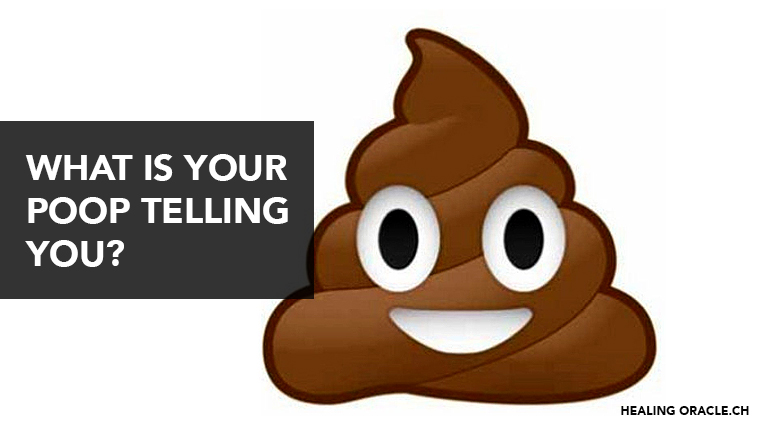Our faeces can tell us a lot about our health, if only we take a quick look before we flush.
By examining our stools every time we go to the toilet, we can tell a lot about our health. It’s not just a load of old sh*t. It really does tell a story.

Type 1: Separate hard lumps, like nuts
Typical for acute disbacteriosis. These stools lack a normal amorphous quality, because bacteria are missing and there is nothing to retain water. The lumps are hard and abrasive, the typical diameter ranges from 1 to 2 cm (0.4–0.8”), and they‘re painful to pass, because the lumps are hard and scratchy. There is a high likelihood of anorectal bleeding from mechanical laceration of the anal canal. Typical for post-antibiotic treatments and for people attempting fibre-free (low-carb) diets. Flatulence isn‘t likely, because fermentation of fibre isn‘t taking place.
Type 2: Sausage-like but lumpy
Represents a combination of Type 1 stools impacted into a single mass and lumped together by fibre components and some bacteria. Typical for organic constipation. The diameter is 3 to 4 cm (1.2–1.6”). This type is the most destructive by far because its size is near or exceeds the maximum opening of the anal canal‘s aperture (3.5 cm). It‘s bound to cause extreme straining during elimination, and most likely to cause anal canal laceration, Haemorrhoid prolapse, or diverticulosis.
To attain this form, the stools must be in the colon for at least several weeks instead of the normal 72 hours. Anorectal pain, Haemorrhoid disease, anal fissures, withholding or delaying of defecation and a history of chronic constipation are the most likely causes. Minor flatulence is probable.
A person experiencing these stools is most likely to suffer from irritable bowel syndrome because of continuous pressure of large stools on the intestinal walls. The possibility of obstruction of the small intestine is high, because the large intestine is filled to capacity with stools.
Adding supplemental fibre to expel these stools is dangerous, because the expanded fibre has no place to go, and may cause hernia, obstruction, or perforation of the small and large intestine alike.
Type 3: Like a sausage but with cracks in the surface
This form has all of the characteristics of Type 2 stools, but the transit time is faster, between one and two weeks. Typical for latent constipation. The diameter is 2 to 3.5 cm (0.8–1.4”). Irritable bowel syndrome is likely. Flatulence is minor, because of disbacteriosis. The fact that it hasn‘t become as enlarged as Type 2 suggests that the defecations are regular. Straining is required. All of the adverse effects typical for Type 2 stools are likely for type 3, especially the rapid deterioration of Haemorrhoidial disease.
Type 4: Like a sausage or snake, smooth and soft
This form is normal for someone defecating once daily. The diameter is 1 to 2 cm (0.4–0.8”). The larger diameter suggests a longer transit time or a large amount of dietary fibre in the diet.
Type 5: Soft blobs with clear-cut edges
I consider this form ideal. It is typical for a person who has stools twice or three times daily, after major meals. The diameter is 1 to 1.5 cm (0.4–0.6”).
Type 6: Fluffy pieces with ragged edges, a mushy stool
This form is close to the margins of comfort in several respects. First, it may be difficult to control the urge, especially when you don‘t have immediate access to a bathroom.
Second, it is a rather messy affair to manage with toilet paper alone, unless you have access to a flexible shower or bidet. Otherwise, I consider it borderline normal. These kind of stools may suggest a slightly hyperactive colon (fast motility), excess dietary potassium, sudden dehydration, or spikes in blood pressure related to stress (both cause the rapid release of water and potassium from blood plasma into the intestinal cavity). It can also indicate a hypersensitive personality prone to stress, too many spices, drinking water with a high mineral content, or the use of osmotic (mineral salts) laxatives.
Type 7: Watery, no solid pieces
This, of course, is diarrhoea, a subject outside the scope of this chapter with just one important and notable exception—so-called paradoxical diarrhoea. It‘s typical for people (especially young children and infirm or convalescing adults) affected by faecal impaction—a condition that follows or accompanies type 1 stools. During paradoxical diarrhoea the liquid contents of the small intestine (up to 1.5–2 liters/quarts daily) have no place to go but down, because the large intestine is stuffed with impacted stools throughout its entire length. Some water gets absorbed, the rest accumulates in the rectum.
The reason this type of diarrhoea is called paradoxical is not because its nature isn‘t known or understood, but because being severely constipated and experiencing diarrhoea all at once, is, indeed, a paradoxical situation. Unfortunately, it‘s all too common.
And on a final note my stool looks like this one. Because laughter is good for the soul.
Love and light
Mary
Ensure to register on our Website: https://healingoracle.ch
Join us on Facebook: https://www.facebook.com/healingoraclech/
Follow us on Twitter: https://twitter.com/_HealingOracle_
Subscribe to us on Youtube: https://www.youtube.com/channel/UC53UQmpwLRQlnakfO5MHz7g
Healing Oracle is made possible by the support of its readers. If you find the posts and resources useful, please consider making a contribution to support us (in any amount) so we can continue to inform and assist people around the world. We feel that giving a voice to those who have transformed their health, of that of a loved one, with alternative treatment is an important mission. Thank you for valuing our work and helping it to continue.To do this please visit our website https://www.facebook.com/healingoraclech
Love and Light
The Healing Oracle Team
Please join our growing numbers on MeWe: Healing Oracle
Also join us on Twitter | YouTube
Global Petition
Please sign our global petition against enforced vaccinations The intention of this petition is to present 5 million signatures to each President, Prime Minister, Health Minister and heads of state worldwide.
Vaccines are a global problem and need to be tackled on a global level.
If we stand as one, we have a chance of saving the children of the future.


